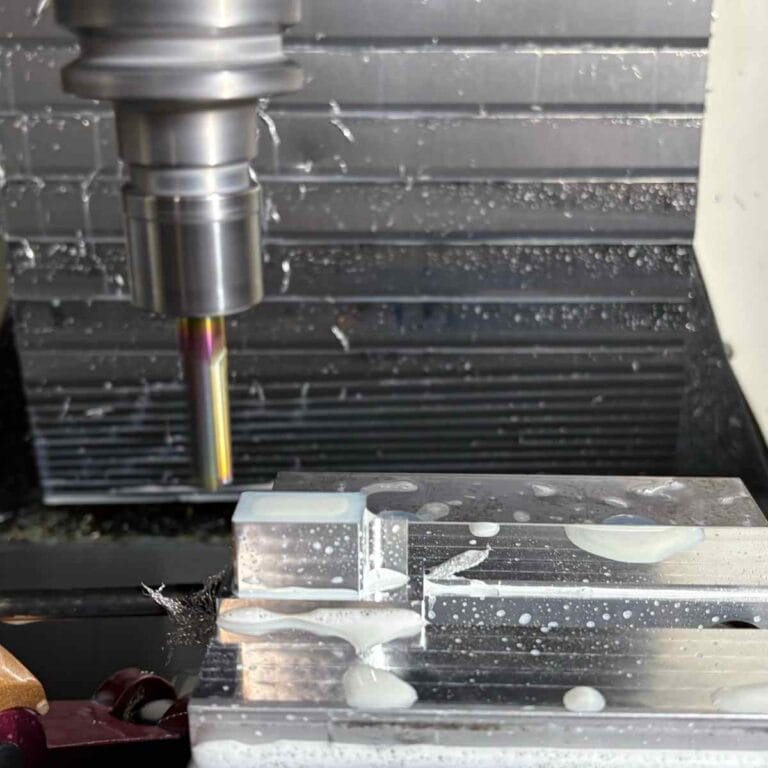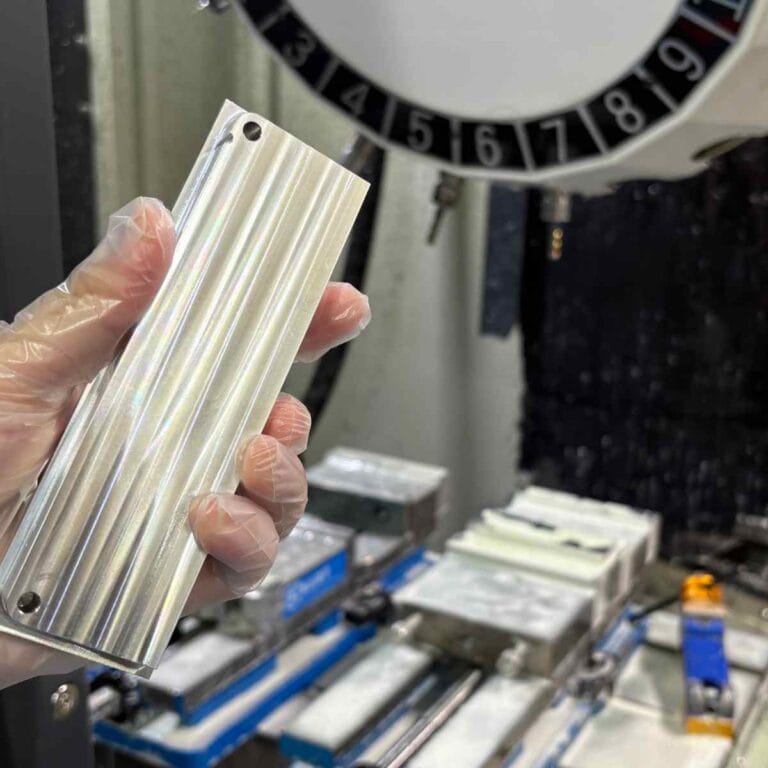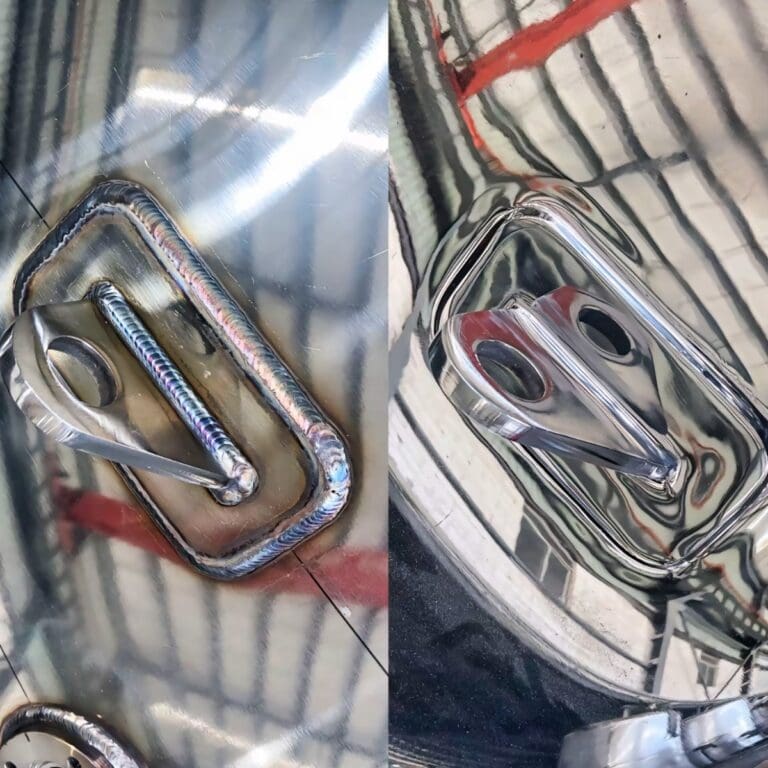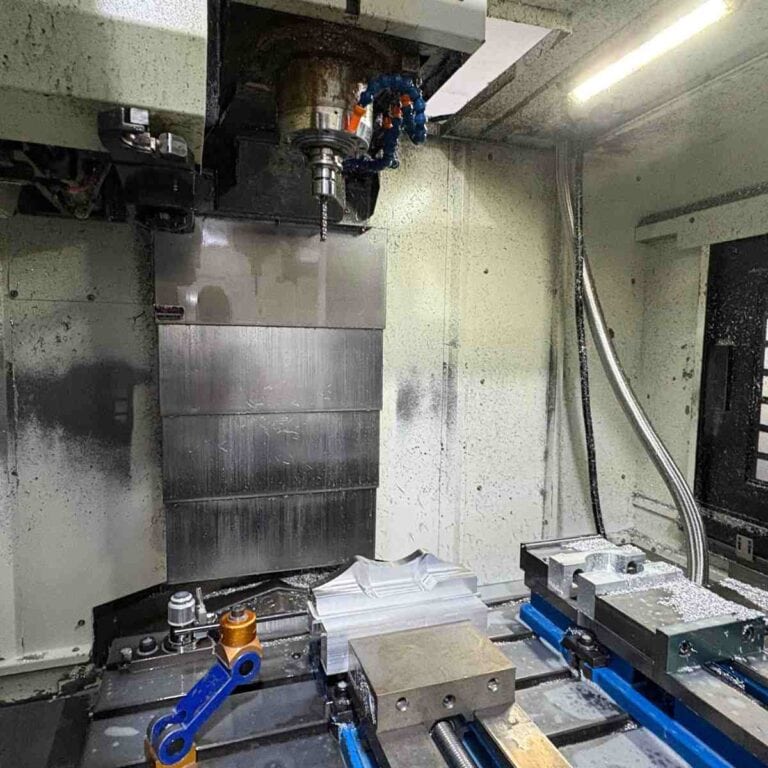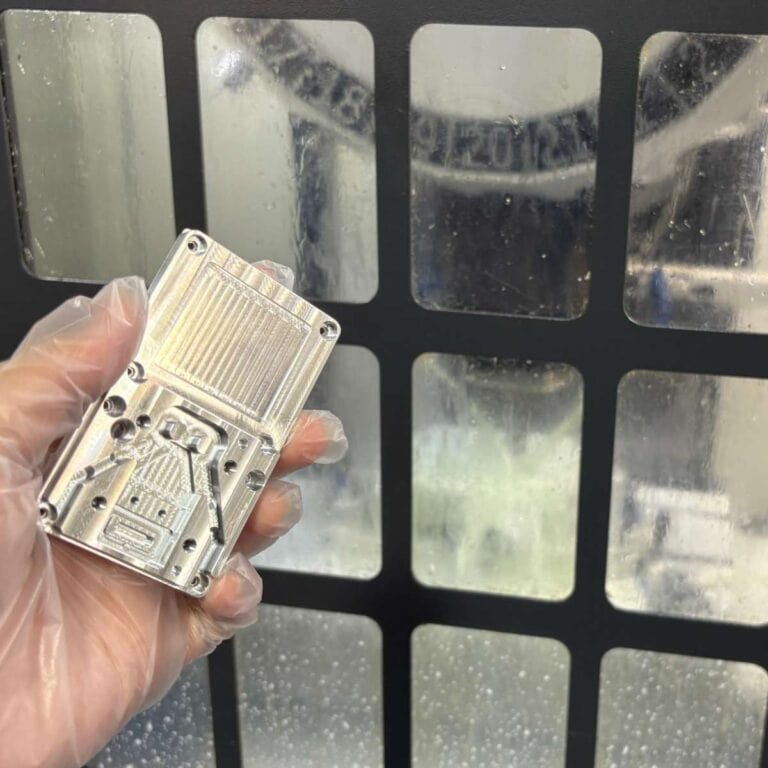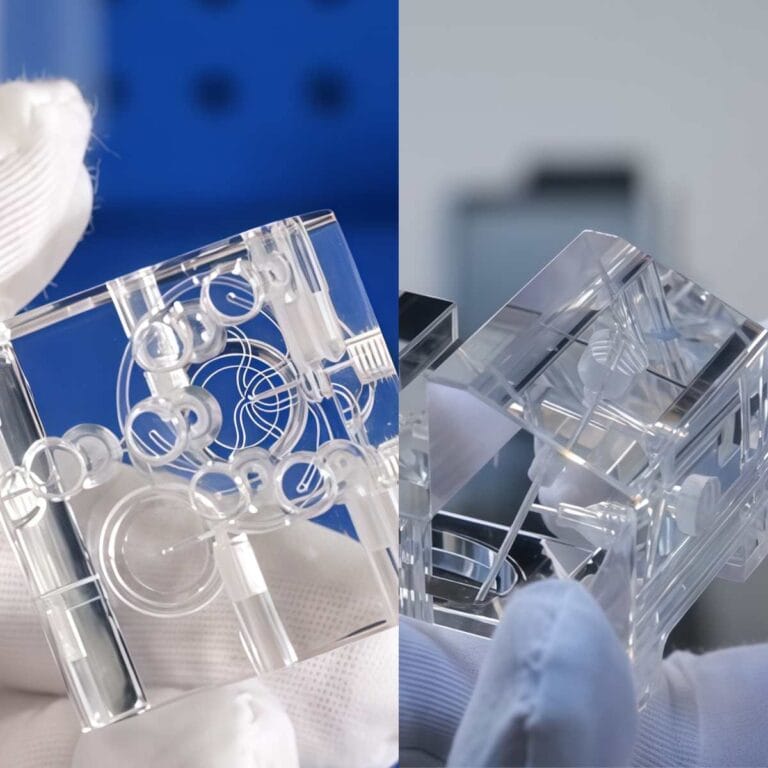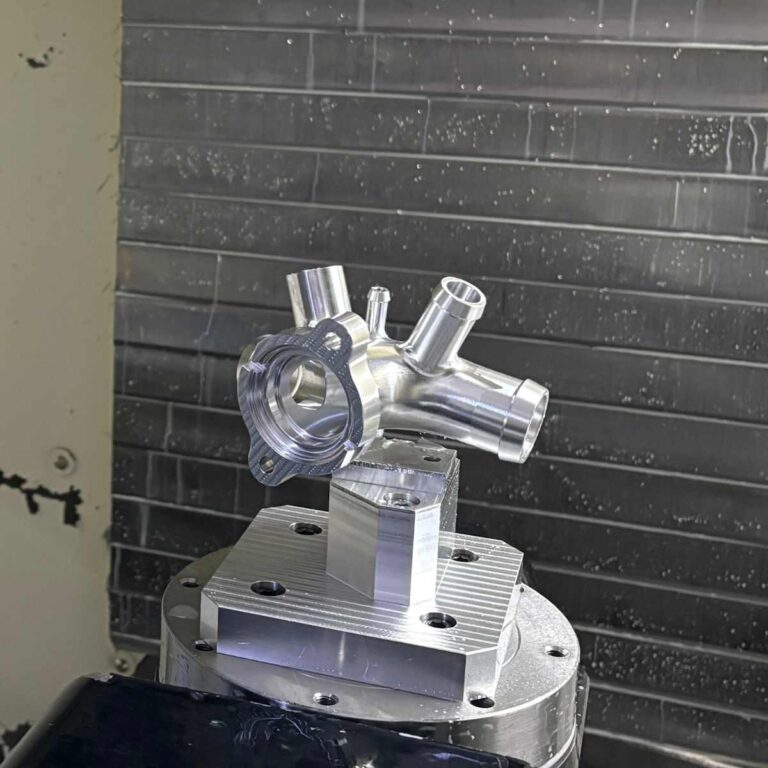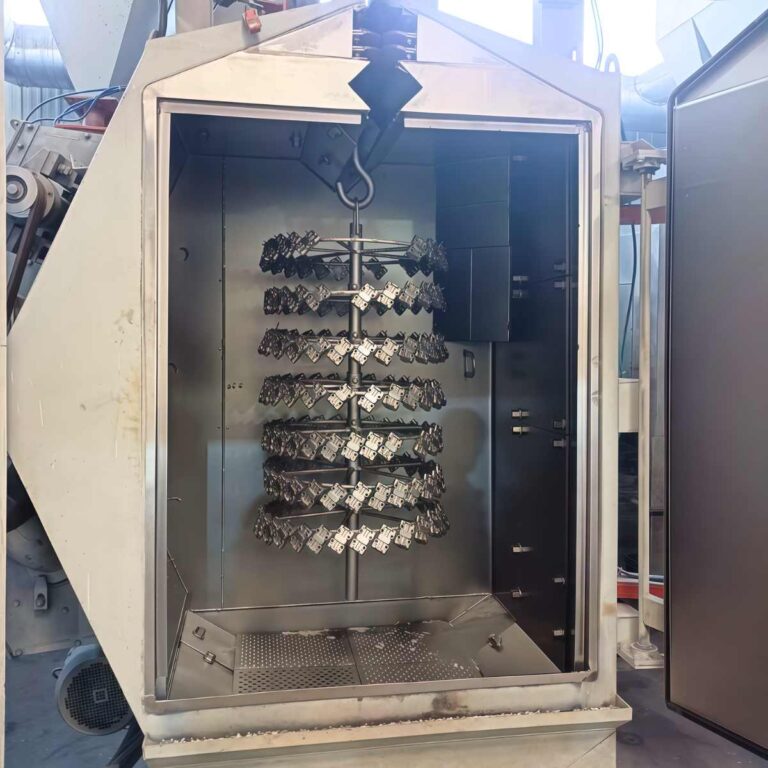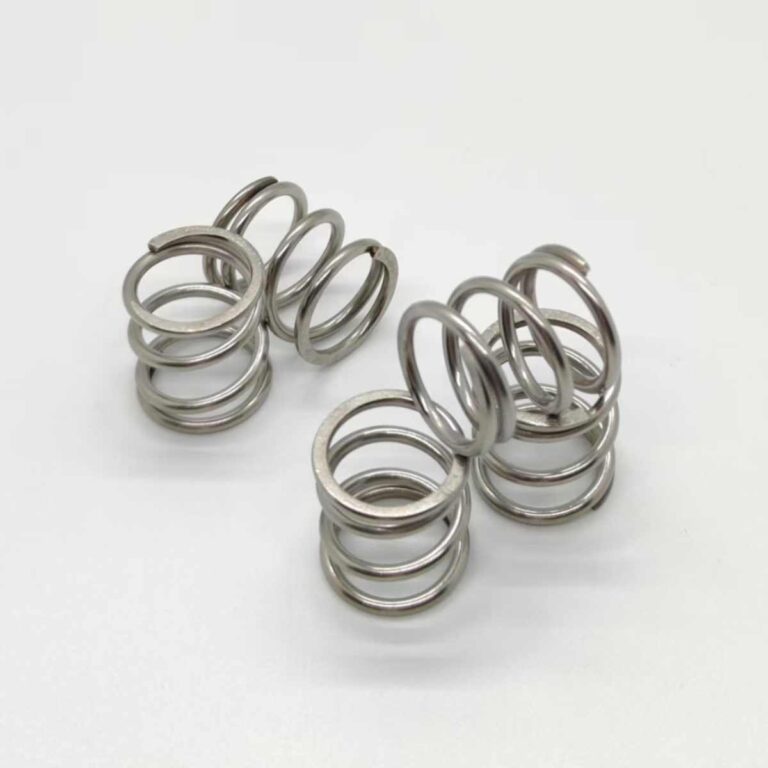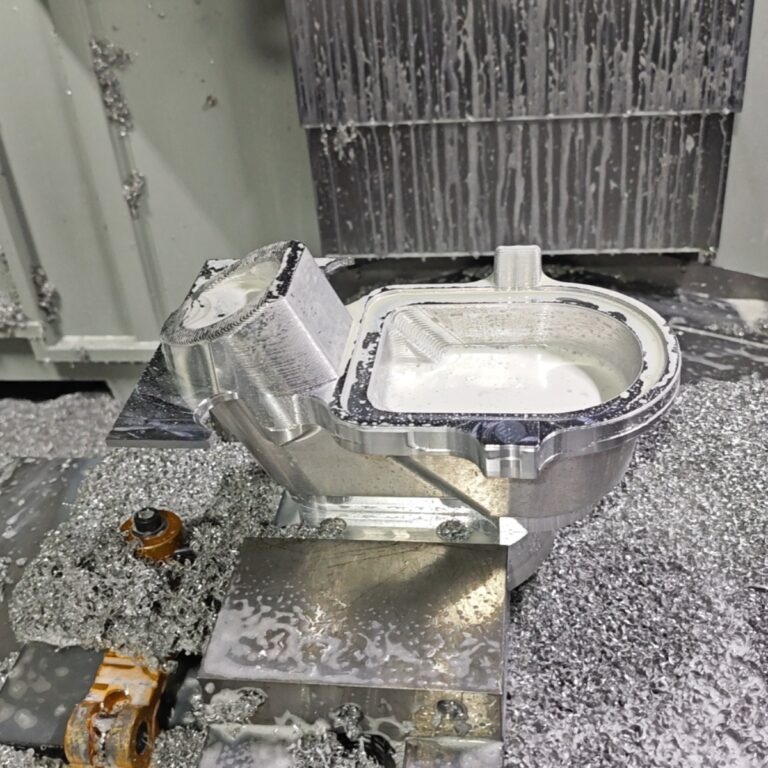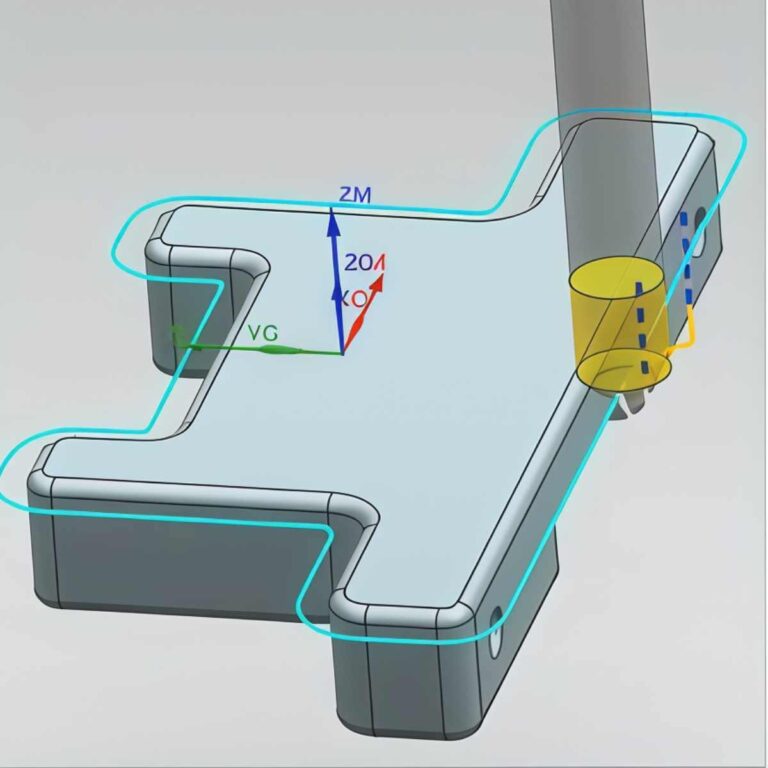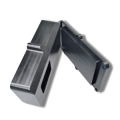Brass is a copper-zinc alloy widely used in manufacturing. The brass melting point usually ranges from 900°C to 940°C (1650°F–1725°F), depending on its composition. Knowing this range is important for casting, forging, and CNC machining, where precise temperature control ensures material quality and reliable performance.
What is Brass
Brass is not a pure element but a Cu-Zn based alloy, sometimes containing small additions of other elements. Its composition defines its physical appearance, corrosion resistance, mechanical properties, and melting range. Understanding its structure is essential before discussing melting behavior.
Get 20% offf
Your First Order
Composition Of Brass
Brass typically contains 55–95% copper and 5–45% zinc. Small additions of tin, lead, aluminum, or nickel can modify its strength, machinability, and melting range.
Solidus and Liquidus
Brass does not have a single melting point but instead melts between two temperatures: the solidus (when melting begins) and the liquidus (when fully liquid).
What is the Typical Melting Range of Brass
The melting range of brass depends on its zinc content and processing conditions. Most alloys do not melt sharply but rather across a small temperature interval.
General Range
Brass typically melts between 900–940°C. For example, yellow brass melts near 900°C, while red brass (high copper content) melts closer to 940°C.
Difference Between Solidus and Liquidus
In metallurgy, brass does not have a sharp, single melting point but rather a melting interval defined by its solidus and liquidus temperatures. The solidus represents the temperature at which the alloy first begins to melt, while the liquidus marks the temperature where it becomes fully liquid. For most common brass alloys, the difference between solidus and liquidus is typically 20–40 °C, though in certain high-zinc or leaded brasses the interval can exceed 50 °C.
This temperature gap directly impacts manufacturing processes:
Casting performance: A wider interval slows fluidity, requiring higher superheating to achieve complete mold filling. For example, cartridge brass (C260) has a melting range of ~900–940 °C, and requires pouring at 1000–1050 °C to ensure defect-free castings.
Forging behavior: Within the semi-solid region, the alloy exhibits plasticity that can be exploited in hot forming, but excessive time in this interval increases the risk of segregation.
Grain structure control: A narrow melting interval (≤20 °C) tends to produce finer, more uniform microstructures, while a broad interval (>40 °C) may lead to compositional inhomogeneity or hot cracking.
Process window management: Precision industries such as aerospace and medical devices often demand tighter control, maintaining process windows within ±5 °C to avoid microstructural defects.
Thus, understanding the solidus–liquidus gap is critical in CNC machining, casting, and forging applications, ensuring not only proper mold filling and forming but also predictable mechanical and surface properties of the finished brass components.
Measurement Conditions
The accuracy of brass melting point determination is highly dependent on measurement conditions, particularly atmosphere and pressure. Under standard atmospheric pressure (1 atm, ~101.3 kPa), most brass alloys exhibit a melting range of 900–940 °C. However, deviations occur when the environmental conditions change:
Atmosphere Effects:
In oxidizing atmospheres (air), zinc preferentially oxidizes at ~907 °C, forming ZnO, which slightly increases the apparent melting point due to oxide film resistance.
In inert atmospheres (argon, nitrogen), oxidation is minimized, giving results closer to the true thermodynamic melting range.
In vacuum conditions (<10⁻³ mbar), zinc vaporization becomes significant. Zinc’s boiling point is 907 °C at 1 atm, but under vacuum it volatilizes at much lower temperatures, often around 700–750 °C, leading to earlier softening and a perceived downward shift of 10–20 °C in the brass melting interval.
Pressure Influence:
According to the Clausius–Clapeyron relation, the melting temperature increases slightly with pressure. For example, raising pressure from 1 atm to 50 atm may shift the melting point of Cu–Zn alloys upward by 2–5 °C.
While this effect is modest compared to atmospheric composition, in high-pressure casting or hot isostatic pressing (HIP), precise control is necessary to prevent unexpected phase transitions.
Practical Observations:
In my own vacuum casting trials, I observed brass beginning to soften at ~880 °C, nearly 20 °C lower than the same alloy tested in air, confirming that zinc evaporation under low pressure accelerates the transition into the semi-solid state.
Thus, accurate measurement of brass’s melting point must specify the environmental parameters. Laboratory standards such as ASTM E2550 (Differential Scanning Calorimetry) often require tests in inert gas to eliminate oxidation artifacts. Without such controls, reported melting ranges may vary by ±15 °C, leading to potential errors in process design for casting, fmillingorging, and CNC machining.
What are the Melting Points of Different Types of Brass
This table shows the brass melting point range (820–1060°C) and how composition shapes performance. Low-zinc α brass offers better stability and conductivity, while high-zinc β brass provides greater strength but more brittleness. Alloys like free-cutting, naval, and nickel brass add machinability, corrosion resistance, or durability for electrical, marine, and industrial uses.
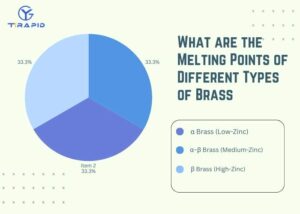
α Brass (Low-Zinc)
Contains less than 35% zinc. Melting range: 900–940°C. I often machine α brass into electrical connectors because it combines good conductivity with stable melting behavior.
α–β Brass (Medium-Zinc)
Contains 35–45% zinc. Melting range: 880–950°C. These alloys are tougher but slightly more difficult to machine. I’ve seen them used in plumbing fittings.
β Brass (High-Zinc)
Contains over 45% zinc. Melting range: 850–920°C. Stronger but more brittle. I once worked with β brass for decorative trim, but we had to control heating carefully to avoid cracking.
Alloy Examples
| Alloy / Type | Melting Range (°C) | Key Features | Typical Applications |
| C210 / C220 / C230 (High-Copper Brasses) | ~1030–1060 | Reddish color, high copper content | Coins, artistic applications |
| C260 (Cartridge Brass) | ~900–940 | Balanced strength and ductility | Casings, precision machining |
| C360 (Free-Cutting Brass) | ~875–900 | Contains lead, excellent machinability | High-precision machining components |
| C485 (Architectural Brass) | ~890–930 | Attractive finish, workable | Decorative panels, doors |
| Naval Brass (C464) | ~890–920 | High corrosion resistance in seawater | Marine hardware, ship fittings |
| Dezincification Brass | ~900–1060 | Resists zinc loss | Plumbing, seawater applications |
| Lead Brass (HPb59-1) | ~830–870 | Low melting point, machinable | Valves, pipe fittings |
| Tin Brass (HSn62-1) | ~820–860 | Strong corrosion resistance | Marine components |
| Nickel Brass | ~940–1000 | Nickel strengthening, durable | Heavy-duty, wear-resistant parts |
| White Brass | ~880–1038 | High zinc content, brittle | Decorative, non-structural items |
| High Tensile Brass | ~900–1060 | High strength, durable | Heavy-duty industrial parts |
What Factors Influence the Melting Point of Brass
The melting point of brass is mainly influenced by copper–zinc ratio, alloying elements, and impurities, along with microstructure, heat treatment, and casting methods. Environmental factors such as pressure and oxidation also shift melting behavior. Understanding these ensures precise control in manufacturing.
Cu/Zn Ratio
The copper-to-zinc ratio is the most decisive factor influencing brass’s melting behavior.
High copper content (>70%): Melting range approaches 935–940°C, similar to pure copper (1085°C). High-copper brasses such as C220 or C230 are used in coins and artistic parts where stable melting is essential.
High zinc content (35–45%): Melting range drops closer to 880–900°C. These alloys, like C260 (cartridge brass), are widely used in casings and plumbing parts.
Alloying Elements
Lead (1–3%): Lowers melting point by 20–50°C, bringing it to ~875–900°C, while also dramatically improving machinability (up to 300% tool life compared to lead-free brass).
Tin (0.5–2%): Raises corrosion resistance, especially in marine environments, and increases melting point slightly by 5–10°C. Example: Tin brass (HSn62-1) with a range of 820–860°C.
Nickel (5–20%): Increases strength and pushes the melting range upward to 940–1000°C, giving nickel brasses higher thermal stability.
Impurities & Purity
Even small amounts of oxygen, sulfur, or iron (<0.1%) can lower melting points by 10–20°C, leading to early softening and casting defects such as porosity. High-purity brass maintains tighter melting ranges, which is critical in aerospace and medical applications.
Microstructure & Grain Size
Fine-grained brass (grain size <10 μm): Shows earlier onset of melting due to higher grain boundary density, reducing thermal stability by ~5–15°C.
Coarse-grained brass: Retains structural integrity longer, with more predictable melting close to its nominal range.
Processing & Heat Treatment
Work-hardening (through rolling or forging) increases dislocation density, shifting effective melting behavior downward slightly, often by 5–10°C.
Annealing relieves internal stresses and stabilizes melting behavior closer to the theoretical range.
Oxidation & Casting Methods
Oxidation films of ZnO or CuO act as thermal insulators, requiring up to 20–30°C higher furnace temperatures for full melting.
Casting technique impact:
Sand casting: Slightly lower effective melting onset due to slower heat transfer.
Die casting: Requires higher superheating (+30–50°C) to ensure full mold filling.
Environmental Factors
Low pressure (vacuum casting): Reduces the effective melting point by
High pressure (compression casting): Raises melting temperature slightly (up to +10°C), improving density but requiring more controlled heating.
How is the Melting Point of Brass Measured and Characterized
Brass does not have a fixed melting point but is defined by solidus and liquidus. Measurement methods include DSC for precise transitions and thermocouples/pyrometers for industrial monitoring. Proper calibration and clean samples are essential, as impurities can shift results by 10–20°C.
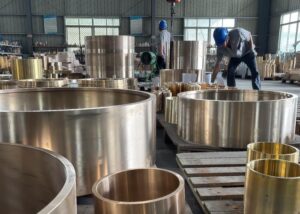
Solidus and Liquidus Determination
Brass alloys melt over a range, starting at the solidus (onset of melting) and ending at the liquidus (fully molten). Typical solidus values are 870–910 °C, with liquidus extending to 940–1060 °C. The gap, usually 20–100 °C, strongly affects casting flow and segregation. Narrow intervals improve flow but raise hot-crack risk, while wide intervals require stricter temperature control.
Differential Scanning Calorimetry (DSC)
DSC is a precise method for detecting melting transitions. Small samples (10–50 mg) are heated at ~10 K/min, with heat-flow curves showing solidus at onset and liquidus at peak/end, accurate to ±1–2 °C. For example, C260 brass shows solidus at 902 °C and liquidus at 937 °C, closely matching industrial reference values.
Thermocouples & Pyrometers
Industrial furnaces commonly use thermocouples and optical pyrometers. Type-K thermocouples work up to 1260 °C with good cost-effectiveness, while Type-S provides ±1 °C precision at higher cost. In brass casting trials, I recorded brass softening near 890 °C with Type-K sensors. Infrared pyrometers, calibrated with blackbodies, are also widely used for non-contact monitoring.
Calibration & Sample Preparation
Accurate results depend on calibration and clean samples. Standard references like tin (232 °C), zinc (419 °C), and copper (1085 °C) are often used. Samples must be polished and oxide-free, otherwise, melting data may shift 10–20 °C lower. Studies show oxygen or sulfur inclusions can depress brass’s effective melting point by ~15 °C. ASTM E2550 also recommends unified sample size and heating rates to reduce error.
How to Melt Brass
Melting brass requires controlled equipment, clean scrap, and proper fluxing to remove impurities. Preheated molds and gradual cooling prevent cracking, while strict safety measures—ventilation, protective gear, and fire control—are essential.
Equipment & Crucibles
Brass melting requires induction or gas furnaces reaching 1,100–1,200 °C, above the liquidus (~900–1,060 °C). Induction units offer precise control, gas furnaces are cost-effective. Graphite crucibles, stable up to 2,500 °C, minimize contamination. Crucibles are capacity-rated (e.g., 50–100 kg) and must match melt volume.
Material Preparation
Brass feedstock must be cleaned of oil and oxides to avoid slag and porosity. Cleaning methods include sandblasting or acid pickling. Mixing grades is risky—C360 (~875–900 °C) melts lower than C260 (~900–940 °C). Even a 1–2% zinc shift alters tensile strength and machinability.
Flux & Slag Removal
Fluxes such as borax or chloride blends (1–3% of melt weight) dissolve oxides and form a protective layer, reducing zinc loss by up to 5%. Skimming removes slag. Tests show proper fluxing boosts usable yield by ~8–10%.
Pouring & Cooling
Molten brass is poured into preheated molds (200–500 °C) to avoid cracks. Controlled pouring prevents turbulence and oxides. Cooling rates of 1–5 °C/s ensure grain uniformity. A 50 kg melt solidifies in ~30–45 minutes depending on section thickness.
Safety Considerations
Zinc oxide fumes above 950 °C may exceed 5 mg/m³, requiring ventilation (10–15 air changes/hour). PPE includes heat gloves rated to 1,000 °C, face shields, and aluminized aprons. Class D extinguishers must be nearby. In one 50 kg melt, poor airflow caused operator discomfort, proving ventilation essential.
What is the Difference Between Brass’s Melting and Boiling Points
Brass melts at 900–940°C and boils at 1500–1600°C. The large gap provides processing stability, but zinc begins vaporizing near 907°C, risking strength loss. Careful temperature control just above liquidus minimizes zinc volatilization and maintains alloy consistency in casting and machining.
Melting vs. Boiling
The brass melting point ranges from 900–940 °C, while its boiling point is much higher, around 1500–1600 °C. This wide gap between the brass melting point and boiling point creates a stable thermal window for casting, forging, and machining, reducing risks of uncontrolled phase change.
Zinc Volatilization
Although the brass melting point signals the onset of melting, zinc starts to volatilize at about 907 °C. This overlap means zinc loss can occur during high-temperature operations, altering alloy strength and color. Data shows brasses with >35% zinc may lose 1–3% zinc if overheated beyond 1000 °C, impacting durability.
Process Implications
Maintaining furnace temperatures only 20–40 °C above the brass melting point ensures fluidity without excessive zinc loss. My experience shows that going 100 °C above the brass melting point produces porous castings. Careful control near the liquidus secures alloy consistency and reliable performance in industrial parts.
How Does Brass’s Melting Point Compare to Other Metals
The brass melting point lies between low-melting metals like lead and zinc and higher-melting metals such as steel or nickel. This mid-range makes brass easier to melt and cast than structural alloys, yet stronger than soft metals, explaining its wide use in casting, CNC machining, and industrial applications.
| Metal / Alloy | Melting Point (°C) | Relation to Brass (900–940°C) | Notes |
| Brass | 900–940 | — | Mid-range, easy to cast & machine |
| Copper | 1085 | Higher | Pure copper melts above brass range |
| Zinc | 419 | Much lower | Major element in brass, lowers brass melting point |
| Aluminum | 660 | Lower | Easier to melt, widely used in casting |
| Lead | 327 | Very low | Poor structural strength, toxic fumes |
| Steel | 1370–1510 | Higher | Stronger, requires higher heat for processing |
| Cast Iron | 1150–1200 | Higher | Common in heavy industry, harder to melt than brass |
| Nickel | 1455 | Higher | High-temp applications, corrosion resistant |
| Titanium | 1668 | Much higher | Aerospace-grade, needs advanced furnaces |
| Bronze | 950–1050 | Slightly higher | Similar alloy, copper + tin instead of zinc |
What Does Brass’s Melting Point Mean for Processes and Applications
The brass melting point (900–940 °C) allows efficient casting, forging, and brazing, while enabling reliable joining with other metals. Its lower melting point than copper reduces CNC tool wear and boosts efficiency, making brass ideal for electrical connectors, plumbing valves, decorative hardware, and other cost-effective applications.
CNC Machining
Cutting Advantage: The lower brass melting point compared to copper reduces cutting resistance, improving machining speed.
Tool Life: When machining free-cutting brass (C360, 875–900°C), tool wear is reduced by 10–30%.
Thermal Stability: A relatively low melting point helps dissipate heat, minimizing thermal deformation.
Precision Results: At high-speed cutting (>10,000 rpm), dimensional tolerance can be maintained within ±0.01 mm.
Applications: Extensively used for automotive connectors, medical components, and aerospace precision parts.
Casting & Forging
Moderate Melting Point: The brass melting point is 900–940°C, lower than copper but high enough to ensure strength.
Excellent Fluidity: At this range, molten brass flows easily into molds, reducing shrinkage porosity and voids.
Hot Working Range: Forging typically occurs at 650–750°C, maintaining plasticity while preventing grain growth.
Data Advantage: Studies show brass castings have up to 20% fewer defects compared to pure copper castings.
Applications: Commonly used for valves, bearings, decorative parts, and large-volume castings.
Brazing & Welding
Thermal Window: The brass melting point defines the temperature limits for brazing and welding.
Brazing Range: Brazing is usually performed at 800–880°C, close to the solidus but below full melting.
Welding Risk: Near the liquidus, zinc volatilizes at 907°C, which can cause porosity if not controlled.
Data Insight: Improper heat control can lower weld strength by 15–25%, affecting reliability.
Applications: Widely used in pipe joints, electrical terminals, and structural connections requiring durability.
Industry Applications
| Industry | Applications | Advantage of Brass Melting Point |
| Electrical | Connectors, terminals, switches, and other conductive components | Brass melting point allows easy casting and precise shaping, ensuring conductivity with low tool wear |
| Plumbing | Fittings, valves, faucets, and corrosion-resistant piping components | Moderate brass melting point enables leak-proof, durable fittings while minimizing energy costs |
| Decorative | Handles, railings, jewelry, door hardware, and architectural accents | Brass melting point supports fine casting and polishing, giving high-quality finish with lower risks |
| High-Temp | Heat exchangers, industrial ovens, and other thermal-resistant components | Brass melting point ensures structural stability under elevated temperatures without rapid degradation |
What Common Problems Occur When Melting Brass
Melting brass is more than heating it to liquid. The brass melting point (900–940 °C) defines a narrow process window, where small deviations may cause defects. Excessive heat can lead to zinc loss, oxides, or porosity, so controlling the brass melting point is key to consistent, defect-free parts.
Dezincification
When temperatures rise well above the upper brass melting point (~940 °C), zinc begins to volatilize (boiling point ≈ 907 °C).
This leads to selective leaching of zinc, leaving a porous copper-rich structure that is mechanically weaker.
Studies show brass with >35% zinc content loses up to 5% mass after prolonged overheating, directly affecting corrosion resistance.
Oxide Inclusions
Oxide films form rapidly when molten brass is exposed to air, especially near the brass melting point range.
If not skimmed or fluxed properly, these oxides become entrapped, leading to slag inclusions or porosity.
In die casting, oxide contamination has been measured to reduce tensile strength of brass alloys by up to 15%.
Gas Porosity
Moisture or hydrogen dissolved near the brass melting point can generate gas bubbles during solidification.
Porosity lowers density and can compromise sealing applications, such as valve bodies or hydraulic fittings.
In industrial practice, degassing treatments can reduce porosity defects by over 40%.
Composition Variations
Poor mixing or uneven heating across the brass melting point interval (solidus ~900 °C to liquidus ~940 °C) can cause segregation.
This results in non-uniform microstructures, producing localized hardness variations of ±15 HB in finished parts.
Such variations often lead to unpredictable wear and failure under mechanical loads.
In one valve body casting project, failure during pressure testing was traced to hidden porosity. Post-analysis showed overheating above the safe brass melting point range without adequate degassing. Correcting the melt practice—controlling temperature within 910–930 °C and applying argon degassing—reduced defect rates by 70%.
What Environmental and Compliance Considerations are Needed
Melting brass requires attention to environmental and regulatory factors. Proper exhaust systems control zinc fumes, while recycling reduces energy consumption. Compliance with RoHS and REACH ensures alloys meet global standards and market access, making responsible practices essential.
Fumes & Emissions
When brass is heated to its melting range of 900–940°C, zinc begins to volatilize at around 907°C, generating zinc oxide fumes.
These fumes are harmful if inhaled and can cause metal fume fever, an acute respiratory condition documented in foundry workers.
Industrial studies show that airborne zinc concentrations can exceed 5 mg/m³ in poorly ventilated workshops, surpassing OSHA’s permissible exposure limit (PEL) of 5 mg/m³ (8-hour TWA).
To mitigate risks, local exhaust ventilation (LEV) systems and HEPA filtration are recommended, reducing fume levels by up to 95%.
Recycling & Energy Use
Brass is one of the most recyclable alloys, with global recycling rates estimated at 80–90% in manufacturing industries.
Recycling brass scrap requires only 20–25% of the energy needed to produce new brass from virgin copper and zinc ores.
Controlled remelting not only saves costs but also reduces CO₂ emissions by approximately 60% compared to primary production.
For example, recycling 1 ton of brass scrap can save nearly 3,500 kWh of energy and reduce greenhouse gas emissions by 1.5 tons of CO₂ equivalent.
Regulations
The EU RoHS Directive (2011/65/EU) and REACH Regulation (EC 1907/2006) impose strict limits on hazardous substances, including lead content in brass alloys.
For many applications, lead content must not exceed 0.1% by weight, however, some exemptions exist for machining grades where lead improves performance.
Non-compliance can block market access in regions like the European Union, North America, and Japan, where regulatory audits are stringent.
Manufacturers increasingly adopt low-lead (<0.09% Pb) or lead-free brasses such as EcoBrass (C69300) to meet environmental standards while maintaining machinability.
FAQs
What is the problem with melting brass?
The biggest challenge is zinc volatilization, starting near 907 °C. This not only generates toxic zinc oxide fumes but also shifts the alloy ratio, reducing strength, ductility, and corrosion resistance. Improper control can cause porosity, slag inclusions, and uneven microstructure in castings.
How hard is it to melt brass?
Brass is relatively easy to melt. Its melting point (900–940 °C) is much lower than copper (1085 °C) and steels (>1370 °C). Industrial induction or gas furnaces can reach this range quickly. This is why brass is favored for foundry work and precision casting.
What temperature would liquid brass solidify?
Liquid brass begins to solidify around its solidus temperature, 880–930 °C, depending on composition. For example, α-brass (low zinc) solidifies closer to 930 °C, while β-brass (high zinc) solidifies near 880 °C. The exact freezing point range ensures controlled casting.
Why are there so many types of brass?
Brass exists in many types because adjusting Cu/Zn ratios (55–95% Cu, 5–45% Zn) and adding elements (Pb, Sn, Al, Ni) changes properties. For instance, C260 Cartridge Brass melts at ~900–940 °C for casings, while C360 Free-Cutting Brass melts at ~875–900 °C with superior machinability.
Is brass a brittle material?
Brass is generally ductile and machinable, but brittleness depends on composition. High-zinc β-brass (>45% Zn) is stronger but more brittle, especially at 850–920 °C melting range. Low-zinc α-brass remains tough and formable, making it ideal for connectors and decorative applications.
Conclusion
Brass melts at 900–940°C, depending on composition and conditions. Understanding these factors helps optimize casting, machining, and ensure reliable performance in plumbing, electronics, and decorative parts.What other thoughts do you have about the melting point of brass?welcome to message us sharing your ideas.

